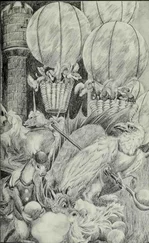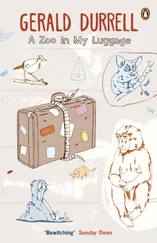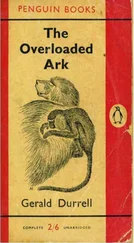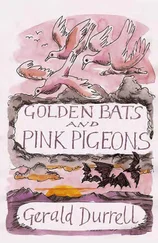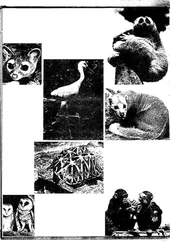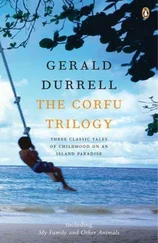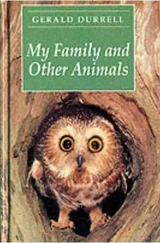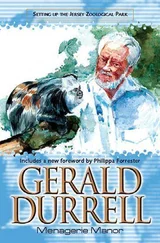Gerald Durrell - THREE SINGLES TO ADVENTURE
Здесь есть возможность читать онлайн «Gerald Durrell - THREE SINGLES TO ADVENTURE» весь текст электронной книги совершенно бесплатно (целиком полную версию без сокращений). В некоторых случаях можно слушать аудио, скачать через торрент в формате fb2 и присутствует краткое содержание. Жанр: Современная проза, на английском языке. Описание произведения, (предисловие) а так же отзывы посетителей доступны на портале библиотеки ЛибКат.
- Название:THREE SINGLES TO ADVENTURE
- Автор:
- Жанр:
- Год:неизвестен
- ISBN:нет данных
- Рейтинг книги:3 / 5. Голосов: 1
-
Избранное:Добавить в избранное
- Отзывы:
-
Ваша оценка:
- 60
- 1
- 2
- 3
- 4
- 5
THREE SINGLES TO ADVENTURE: краткое содержание, описание и аннотация
Предлагаем к чтению аннотацию, описание, краткое содержание или предисловие (зависит от того, что написал сам автор книги «THREE SINGLES TO ADVENTURE»). Если вы не нашли необходимую информацию о книге — напишите в комментариях, мы постараемся отыскать её.
THREE SINGLES TO ADVENTURE — читать онлайн бесплатно полную книгу (весь текст) целиком
Ниже представлен текст книги, разбитый по страницам. Система сохранения места последней прочитанной страницы, позволяет с удобством читать онлайн бесплатно книгу «THREE SINGLES TO ADVENTURE», без необходимости каждый раз заново искать на чём Вы остановились. Поставьте закладку, и сможете в любой момент перейти на страницу, на которой закончили чтение.
Интервал:
Закладка:
The main furniture of this living-room consisted of a radiotelephone apparatus, an enormous table, a number of deep hammocks hung at strategic points and one or two chairs. The walls were festooned with a weird variety of weapons: bows and arrows, blowpipes, shotguns and rifles, spears, and curious feather head-dresses, interspersed with bunches of maize hung up to dry.
We ate lunch in this fascinating room, and during the course of the meal we learned something that caused me acute anguish: there was no store at Karanambo, and there never had been. Moreover, McTurk had no boxes or wood suitable for crating up any animals we caught. McTurk seemed vastly amused that anyone in Georgetown should be silly enough to tell me that there was a store in Karanambo, and as I grew more and more depressed he became more and more amused.
"Wondered why you hadn't brought any nets and things," he said. "When I heard animal collectors were coming I thought you'd be loaded down with traps and ropes and things."
When we had finished the meal, McTurk suggested, to lighten our gloom, that we might like to accompany him on a fishing trip he was making down the river. It would give us a chance to spy out the land and work out some sort of plan. We made our way down through the trees to the river, and there, in a tiny bay, we found an odd collection of boats. Some were native canoes, some resembled ship's lifeboats, and one of them was a small tubby dinghy with an outboard engine.
McTurk climbed into the dinghy and was carrying out some sort of adjustments to the engine, and Bob and I reclined on the bank above to have a smoke. No sooner had we settled ourselves than we were fiercely attacked by great numbers of tiny black flies a little larger than a pin-head but with a bite that was out of all proportion to their size. You felt as though you were being stabbed all over with thousands of cigarette ends, and Bob and I were soon leaping about the bank cursing and slapping, hurriedly rolling down the sleeves of our shirts. McTurk watched our antics with amusement.
"They're kaboura flies," he explained, "but they're not so bad now. You should see them in the rains, millions of them."
The kabouras continued their assault on us until the dinghy was pushed out into mid-stream and the engine started. A few of them flew after us, but we soon left them behind. McTurk explained that they only lived in moist places, and so during the dry season they inhabited only the margin of the river. During the rains, when vast areas of the savannah were covered with water, the flies had a greatly increased range which they took full advantage of, settling on you in clouds if you ventured out unprotected.
The river was not very wide, but the tawny waters were deep, and the current was fast. Where the river curved, the rippling waters had piled up great banks of golden sand, dotted with the rotting trunks of fallen trees or great slabs of smooth grey rock. The forest on the bank was not very tall but extremely dense and tangled. It was not the lush green you would expect in the proximity of so much water, but was decked out in drab shades of grey and olive green and looked dusty and parched. McTurk lounged easily in the stern of the boat, his hat over his eyes, and proceeded to show off the Rupununi to us. We could not have had a better guide, for he had lived all his life there and knew the country as well as any Amerindian, if not better.
One of the first things I asked him was whether there were any electric eels to be found in the river, for I was anxious to get some specimens. McTurk replied that there were plenty of them, and to prove his point he turned the dinghy's nose in to the bank and landed us at a spot where the forest had given way to a series of rock slabs, arranged like steps, that were worn smooth by the action of the water. He led us across these grey steps of rock until we came to a spot, some six feet from the water's edge, where there were a number of potholes sunk into the rock. These were about two feet across, descending, apparently, into the bowels of the earth and filled with clear, copper-coloured water. McTurk told us to listen and stamped heavily round the edge of the holes. After a brief pause there arose a series of snoring grunts vibrating up through the rocks under our feet.
"Electric eels," explained McTurk. "They live in these potholes. They've got underwater passages leading out into the river, of course. If you stamp for long enough they get scared and swim out into the river, then you get a chance to shoot one."
He stamped again, and a chorus of frantic grunts came from beneath the rocks, curious bubbling, belching grunts, more the sort of noise you would expect from a pig in a squishy sty then from an electric eel in its underwater cave. As we continued our way down the river McTurk said that he thought the electric eel had been greatly overrated; they were not, he admitted, ideal bathing companions, but he did not think they were as vicious or as deadly as some stories about them would have you believe. I decided to reserve my judgement until I knew more about them.
Below the home of the electric eels the river curved in a series of gentle bends, and rounding one of these we came to a huge sandbank populated by three of the most fantastic birds I had ever seen. Their plumage was black and white, their legs were very short, and their beaks were elongated, top heavy-looking affairs vividly coloured with yellow, scarlet, and black. They teetered about on the sand on their tiny legs, pointing their great clowns' noses at us and uttering peevish squeaks of alarm. Prom a distance their beaks looked curiously misshapen, and it was only by studying them through the field-glasses that I discovered why this was. The lower mandible was considerably longer than the upper one, so the bird looked as though someone had chopped off the first two or three inches of its upper bill.
This lopsided beak, decked out in such brilliant colours, certainly made them look most peculiar. The skimmer, as this bird is called, is not a freak; this amputated and multi-coloured beak is no more due to an error of nature than is Button's sloth; it is, on the contrary, a carefully worked out and ingenious device which helps the bird to obtain its food. From time to time there are published books which labour under such titles as ‘Quaint Pacts of Animal Life', and almost always, tucked away somewhere inside, you will find the author going into transports of amazement over the various beaks to be found in the bird world. The first birds mentioned are usually pelicans and flamingos. Rarely, if ever, is the skimmer described, and yet it must possess one of the most extraordinary beaks to be found on any bird. The skimmer flies low over the surface of the water, with open beak hence its name. The long lower mandible cuts along the surface, like the blade of a pair of scissors cutting through cloth, and scoops up tiny fry and other water life on which the bird lives. It would find this trick difficult to perform if both top and bottom mandibles were the same length, so nature has carefully removed the unwanted portion of beak. The skimmers watched us anxiously, fidgeting on their short legs, as we approached the sandbank; the engine spluttered and died, and as the nose of the dinghy pushed its way into the sand with a soft hiss, the three birds flew up, pointed their coloured beaks downstream and flew off, calling to each other in a prolonged twittering screech.
The sand was covered with a multitude of different tracks, and interlaced among them were the tracks of the skimmers, branching across the sand like a stalk of ivy. Among the tracks was one that led up from the waters' edge to the top of the bank. It was a long, smooth furrow, as would be made by rolling a heavy ball across the sand, and on each side of it were lines of short, deep clefts. Where the track ended there was a circular area which looked as though it had been roughly patted down with a spade. I was puzzling over this strange track when McTurk explained.
Читать дальшеИнтервал:
Закладка:
Похожие книги на «THREE SINGLES TO ADVENTURE»
Представляем Вашему вниманию похожие книги на «THREE SINGLES TO ADVENTURE» списком для выбора. Мы отобрали схожую по названию и смыслу литературу в надежде предоставить читателям больше вариантов отыскать новые, интересные, ещё непрочитанные произведения.
Обсуждение, отзывы о книге «THREE SINGLES TO ADVENTURE» и просто собственные мнения читателей. Оставьте ваши комментарии, напишите, что Вы думаете о произведении, его смысле или главных героях. Укажите что конкретно понравилось, а что нет, и почему Вы так считаете.

